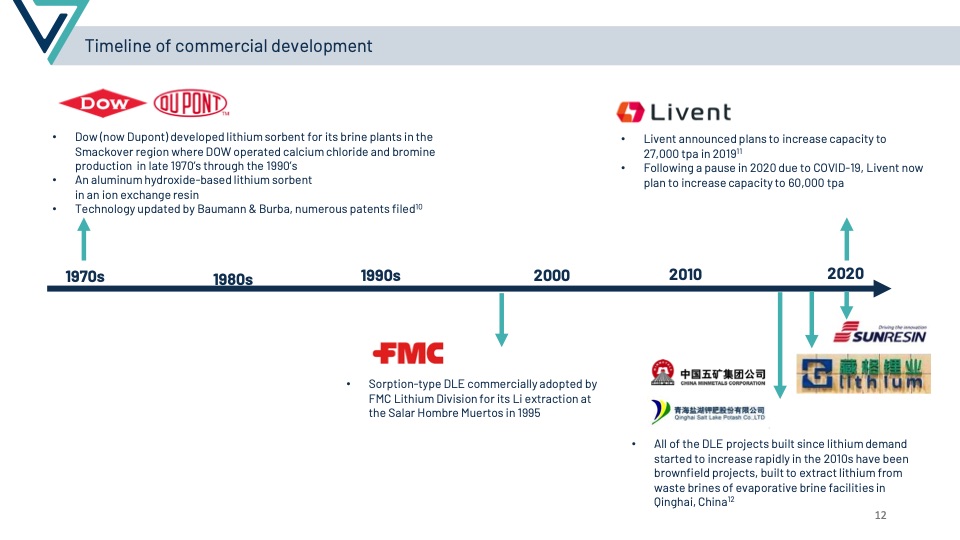
PDF Publication Title:
Text from PDF Page: 012
Timeline of commercial development • Dow (now Dupont) developed lithium sorbent for its brine plants in the Smackover region where DOW operated calcium chloride and bromine production in late 1970’s through the 1990’s • An aluminum hydroxide-based lithium sorbent in an ion exchange resin • Technology updated by Baumann & Burba, numerous patents filed10 1970s 1980s 1990s • • Livent announced plans to increase capacity to 27,000 tpa in 201911 Following a pause in 2020 due to COVID-19, Livent now plan to increase capacity to 60,000 tpa 2000 2010 2020 • Sorption-type DLE commercially adopted by FMC Lithium Division for its Li extraction at the Salar Hombre Muertos in 1995 • All of the DLE projects built since lithium demand started to increase rapidly in the 2010s have been brownfield projects, built to extract lithium from waste brines of evaporative brine facilities in Qinghai, China12 12PDF Image | Direct Lithium Extraction

PDF Search Title:
Direct Lithium ExtractionOriginal File Name Searched:
f52e369a-522.pdfDIY PDF Search: Google It | Yahoo | Bing
Product and Development Focus for Infinity Turbine
ORC Waste Heat Turbine and ORC System Build Plans: All turbine plans are $10,000 each. This allows you to build a system and then consider licensing for production after you have completed and tested a unit.Redox Flow Battery Technology: With the advent of the new USA tax credits for producing and selling batteries ($35/kW) we are focussing on a simple flow battery using shipping containers as the modular electrolyte storage units with tax credits up to $140,000 per system. Our main focus is on the salt battery. This battery can be used for both thermal and electrical storage applications. We call it the Cogeneration Battery or Cogen Battery. One project is converting salt (brine) based water conditioners to simultaneously produce power. In addition, there are many opportunities to extract Lithium from brine (salt lakes, groundwater, and producer water).Salt water or brine are huge sources for lithium. Most of the worlds lithium is acquired from a brine source. It's even in seawater in a low concentration. Brine is also a byproduct of huge powerplants, which can now use that as an electrolyte and a huge flow battery (which allows storage at the source).We welcome any business and equipment inquiries, as well as licensing our turbines for manufacturing.| CONTACT TEL: 608-238-6001 Email: greg@infinityturbine.com | RSS | AMP |